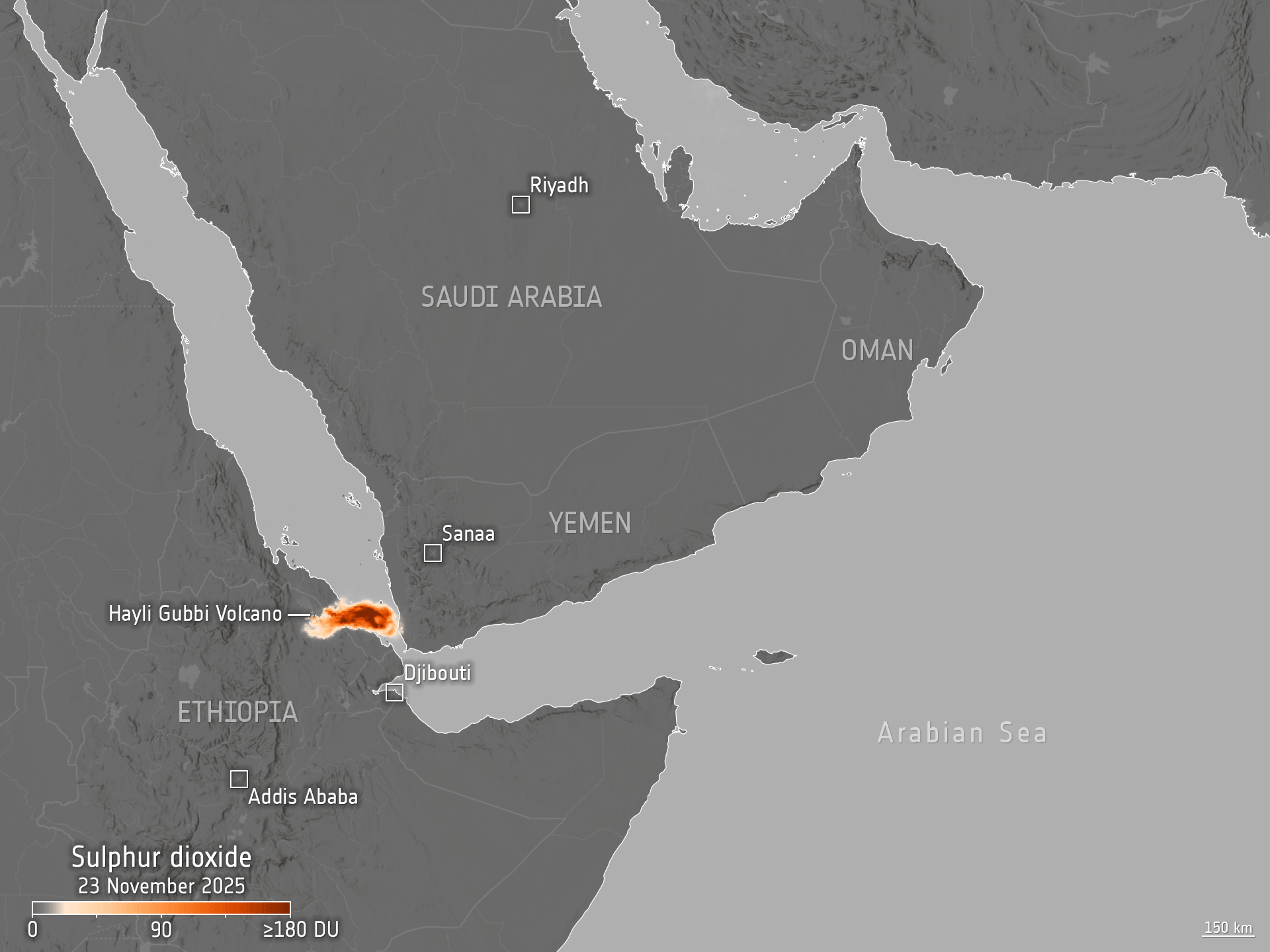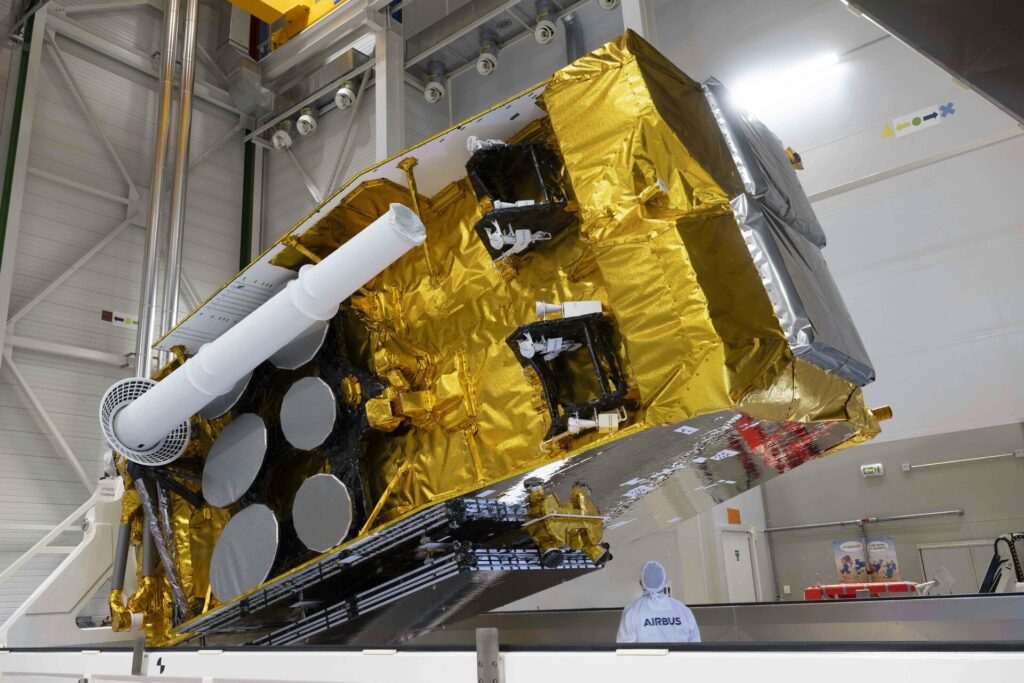Now Reading: Ethiopian volcanic plume
-
01
Ethiopian volcanic plume
Ethiopian volcanic plume


The Hayli Gubbi volcano in northeast Ethiopia, believed to have been dormant for up to 12 000 years, erupted on 23 November 2025, sending a massive plume of ash and sulphur dioxide high into the atmosphere.
The area surrounding the volcano is largely uninhabited and difficult to access, making satellite data and imagery essential for monitoring events in remote regions such as this.
The Copernicus Sentinel-5 Precursor satellite has captured two images of this surprising eruption, one on 23 November and one the following day. The first shows the plume of sulphur dioxide billowing from the volcano at the time of the eruption or shortly after. Here, the plume is starting to drift eastward over parts of the southwestern Arabian Peninsula.
The second image, captured on 24 November, shows how the plume dispersed north-eastward along the coasts of Yemen, Oman and the Arabian Sea.
Sentinel-5 Precursor is the first Copernicus mission dedicated to atmospheric monitoring. The satellite carries an instrument called Tropomi to map a wide range of trace gases and aerosols – that affect air quality and climate.
The recently launched Copernicus Sentinel-5A instrument, abord the first MetOp Second Generation satellite, builds on this capacity by providing daily global measurements of atmospheric gases and aerosols. Its observations include key air pollutants, essential climate variables, and stratospheric ozone that protects us from ultraviolet radiation.
Stay Informed With the Latest & Most Important News
Previous Post
Next Post
-
 012024 in Review: Highlights from NASA in Silicon Valley
012024 in Review: Highlights from NASA in Silicon Valley -
 02Panasonic Leica Summilux DG 15mm f/1.7 ASPH review
02Panasonic Leica Summilux DG 15mm f/1.7 ASPH review -
 03How New NASA, India Earth Satellite NISAR Will See Earth
03How New NASA, India Earth Satellite NISAR Will See Earth -
 04And Thus Begins A New Year For Life On Earth
04And Thus Begins A New Year For Life On Earth -
 05Astronomy Activation Ambassadors: A New Era
05Astronomy Activation Ambassadors: A New Era -
06SpaceX launch surge helps set new global launch record in 2024
-
 07Space Force plans new ‘Futures Command’ amid pressure to speed up modernization
07Space Force plans new ‘Futures Command’ amid pressure to speed up modernization




















